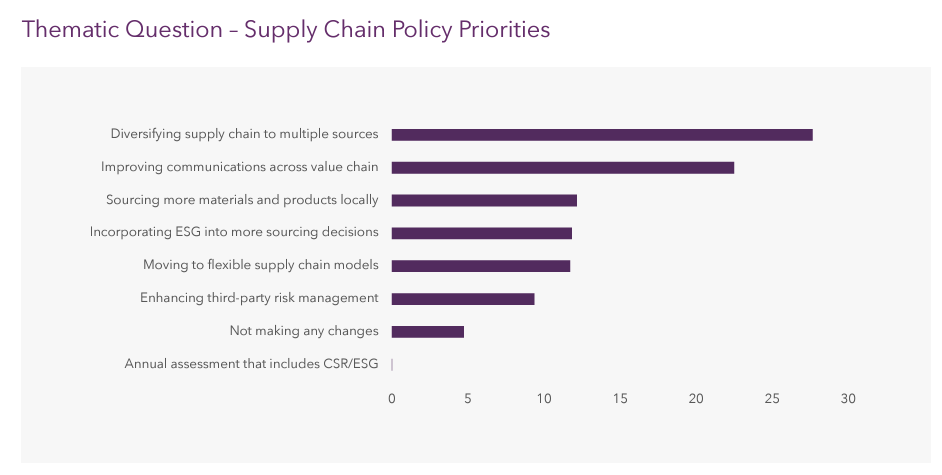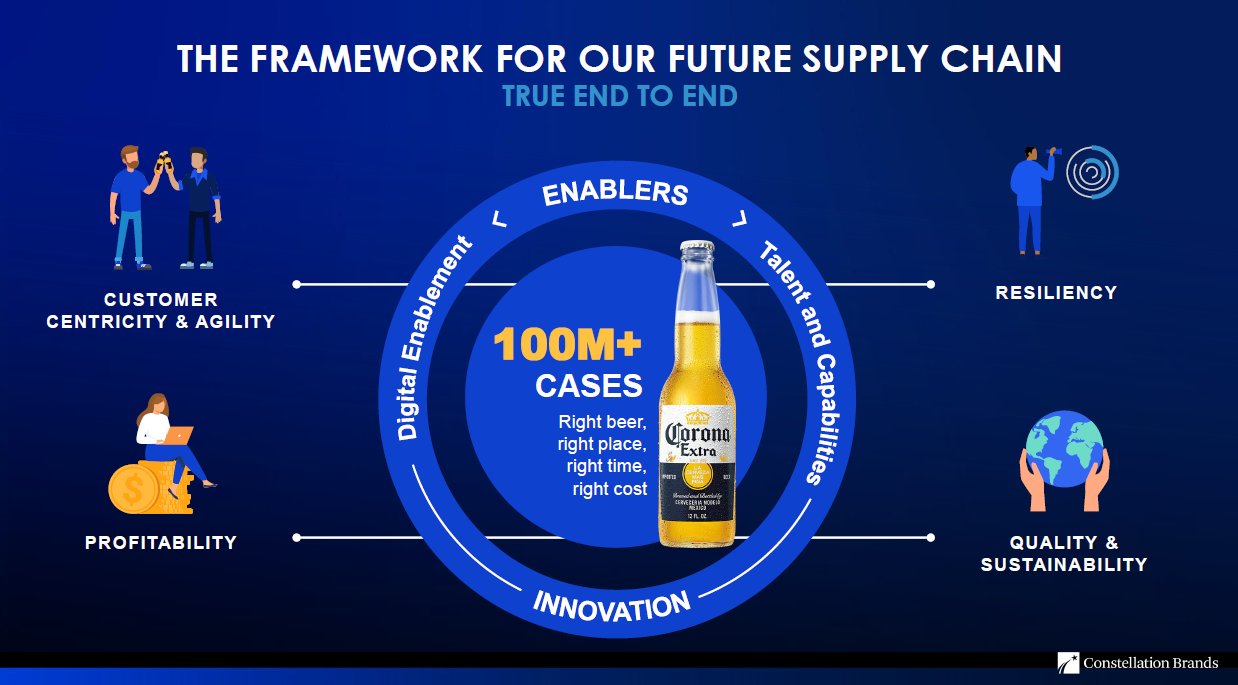This post first appeared in the Constellation Insight newsletter, which features bespoke content weekly and is brought to you by Hitachi Vantara.
Confidence in the global supply chain's continuity and resilience is waning and it's a topic we're likely to hear more about as companies report fourth quarter earnings in the weeks ahead due to geopolitical and climate disruptions. Get ready for another supply chain transformation investment cycle.
The Dun & Bradstreet Global Supply Chain Continuity Index was 47.9 in the first quarter of 2024, down from 51.1 in the fourth quarter of 2023. Why? Geopolitical tensions in different parts of the world, trade disputes and climate-related issues are disrupting trade routes causing both higher delivery costs and delayed delivery times.
Enterprises are trying to re-route supplies through regions insulated from geopolitical issues. As a result, supply costs are increasing due to longer routes, higher freight charges and insurance costs.

There are two ways to look at what is emerging as the next supply chain crisis. First, higher supply chain costs will crimp profits as well as boost inflation. On the bright side, another crisis is going to accelerate the rewiring of the increasingly intelligent supply chain as technologies such as artificial intelligence are used.
My working theory is that these intelligent supply chains are a precursor to broader value chains. Supply chain software such as Manhattan Associates and Blue Yonder are working to integrate data, deliver insights and partner.
Raj Subramaniam, President and CEO of FedEx Corp., said it's imperative companies optimize supply chains. Speaking at the National Retail Federation (NRF) conference, Subramaniam said "you want to optimize your supply chain end-to-end and deliver a better, seamless ecommerce experience. Our mission is to make supply chains smarter for everyone."
FedEx had launched the fdx platform, which integrates FedEx capabilities to give merchants conversion tools, control of shipments, increased visibility, streamlined returns and data on carbon emissions impact. "Physical networks get us where we need to be, but digital supply chains make that journey faster, more precise and — equally critical — more seamless," said Subramaniam.
UPS has launched its own supply chain platform for businesses in November.
Walmart CEO Doug McMillon outlined the company's supply chain transformation at CES 2024. McMillon said Walmart built a general merchandise supply chain with a distribution center as it scaled. In the late 1990s, Walmart built a supply chain for e-commerce. Ultimately, Walmart had three different supply chains.
"For a few years now, we've been working to link them. We're building an intelligent, connected and more automated network, one that already moves more than 100 billion individual items every year. Now we can do that in a smarter fashion. I've been with this company for over 30 years and there's never been a period of transformational change like the one we've started with our supply chain," said McMillon.
Constellation Brands John Kester, senior vice president of operations services at the company, said the company has been streamlining its supply chain by making it more digital and proactive. Speaking at Constellation Brands recent investor day, Kester said "what's even more exciting is the future unlocks the digital tools can deliver beyond the base business case."

Specifically, Kester said Constellation Brands is creating planning signals throughout the supply chain. Those signals will reduce inventory, create more accurate cycle and safety stock levels and improve on-time and full shipments. Data from suppliers to warehouses to distributors to retailers will connect.
In many ways, supply chain transformation projects are insulated from macroeconomic issues. Since supply chain transformation can simultaneously save money and solve sustainability compliance requirements, there's usually a solid return on investment case to be made. Even if a long-term lens is needed for supply chain transformation projects, there are plenty of shorter-term returns available.
Here are a few takeaways on supply chain transformation from Suresh Kumar, Walmart's Chief Technology Officer and Chief Development Officer.
- Intelligent supply chains require systems integration and scale. Kumar said Walmart's three supply chain systems worked well individually. The power was in reimagining the entire systems and reconfiguring parts.
- A flexible data architecture. It almost goes without saying that if a company doesn't have its data game down, the supply chain transformation will suffer. Kumar noted multiple data points that drive its automated supply chain.
- Intelligence, via artificial intelligence, machine learning, data and analytics, needs to be able to forecast what customers want and when they want it and orchestrate the movement of different products that are stored in different ways.
- Forecasting is critical for both suppliers and customers. Suppliers need to see demand changes in near real time as well as customers. "We built an industry leading forecasting system that is smart. It's automated and it uses a patent pending machine learning model that predicts customer behavior and helps us accurately forecast how much of a product is needed and where," explained Kumar. "The system incorporates dozens of different types of data. Like historical sales data, but also things like weather forecasts, the overall popularity of an item compared with last year, but also how an item is trending on social media."
- AI has to model and orchestrate the movement of inventory at scale. "We also built artificial intelligence into how we orchestrate the optimal movement of our inventory. The main job is to have the product where our customers needed the most," said Kumar. "The AI system also redistributes autonomously. If the demand for an item spikes in one area of the country, our automated system redistributes the merchandise within the network so that customers can get it when they want. When the customer places an order. Our AI system predicts how long it will take based on several factors including how many associates and drivers are available but the distance to the home in real time."
- Customer experiences offline and online need to be connected. Kumar said the transformation of the supply chain is ongoing and critical to Walmart's vision of adaptive retail. "It's only going to get better with the connected supply chain," said Kumar.
From our underwriter
Supply chain disruption — from human and technology errors to weather and other crises — has always been a challenge. Manufacturers are using dashboards to visualize performance measurements, preventative maintenance and process optimization. But while they are a critical starting point, supply chain dashboards are not enough. Today’s manufacturers need a way to move from data collection through the supply chain to decision support and actionable insights. Get the full story.


